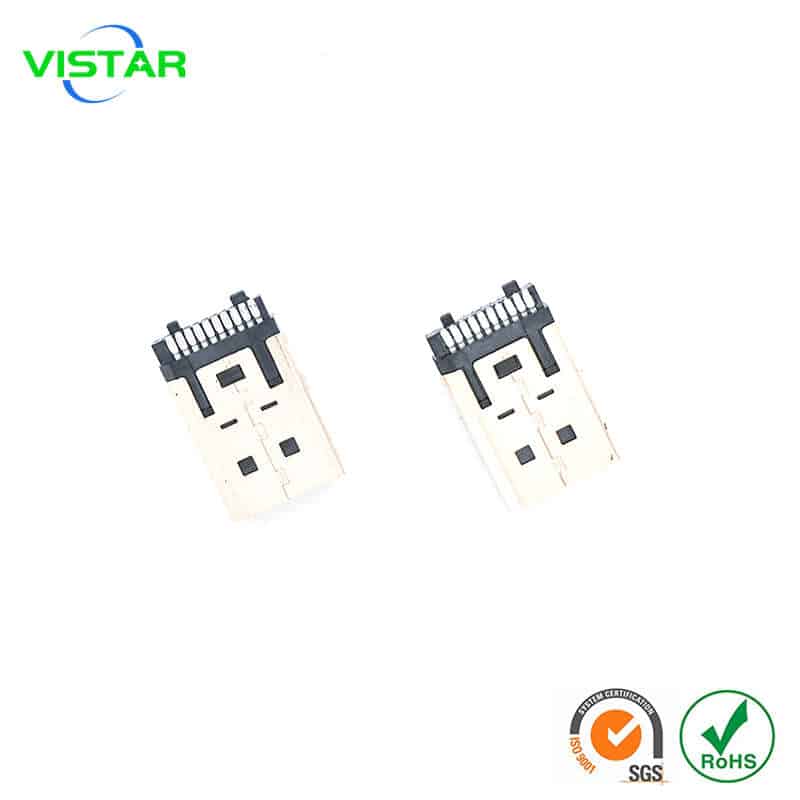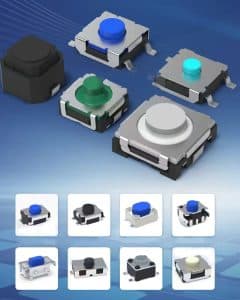In the realm of digital connectivity, where high-resolution displays and immersive multimedia experiences are paramount, the DisplayPort connector (DP connector) stands as a critical innovation.
Developed by the Video Electronics Standards Association (VESA), DisplayPort was introduced in 2006 with a clear mission: to supersede older interfaces like VGA and DVI and provide a robust, scalable solution for digital audio and video transmission.
Unlike proprietary standards, DisplayPort is an open and royalty-free specification, which has significantly accelerated its adoption across the electronics industry .
This article delves into the unique architecture, evolving capabilities, and distinctive advantages that make DisplayPort a cornerstone of modern display technology, from high-performance gaming rigs to professional creative workstations.
Technical Architecture: A Packet-Based Revolution of DisplayPort Connector
The fundamental genius of DisplayPort lies in its departure from legacy signaling methods. It was the first display interface to adopt a packetized data transmission protocol, a methodology borrowed from the world of Ethernet, USB, and PCI Express.
This micro-packet architecture embeds the clock signal directly within the data stream, eliminating the need for dedicated differential pairs to carry a separate clock signal. This innovation results in a more efficient use of bandwidth and a connector with a lower pin count .
The core of DisplayPort’s design consists of two main components:
- Main Link: This is the high-speed, unidirectional channel for video and audio data. It comprises 1, 2, or 4 lanes, with each lane in modern versions (like DP 1.4) offering a data rate of up to 8.1 Gbps, resulting in a total maximum bandwidth of 32.4 Gbps .
- Main Link: This is the high-speed, unidirectional channel for video and audio data. It comprises 1, 2, or 4 lanes, with each lane in modern versions (like DP 1.4) offering a data rate of up to 8.1 Gbps, resulting in a total maximum bandwidth of 32.4 Gbps .
- Auxiliary (AUX) Channel: This is a bidirectional, half-duplex channel that handles lower-bandwidth communication. It is used for critical link management functions, such as Hot Plug Detect, device authentication (like DPCP and HDCP), and transporting data for features like touch-panels and USB.
- Auxiliary (AUX) Channel: This is a bidirectional, half-duplex channel that handles lower-bandwidth communication. It is used for critical link management functions, such as Hot Plug Detect, device authentication (like DPCP and HDCP), and transporting data for features like touch-panels and USB.
This packet-based, layered approach provides immense extensibility, allowing VESA to introduce new features and higher performance in subsequent versions without altering the physical connector fundamentally.
The Evolution of Performance: From Version DisplayPort 1.0 to 2.0

DisplayPort has consistently pushed the boundaries of bandwidth to keep pace with advancing display technologies.
- DisplayPort 1.2: A significant leap, it doubled the effective bandwidth to 21.6 Gbps (HBR2). This version introduced Multi-Stream Transport (MST), enabling multiple independent displays to be driven from a single port via daisy-chaining, and added support for 4K resolution at 60Hz.
- DisplayPort 1.2: A significant leap, it doubled the effective bandwidth to 21.6 Gbps (HBR2). This version introduced Multi-Stream Transport (MST), enabling multiple independent displays to be driven from a single port via daisy-chaining, and added support for 4K resolution at 60Hz.
- DisplayPort 1.4: Building on the 1.3 standard, it maintained the HBR3 bandwidth (32.4 Gbps) but incorporated Display Stream Compression (DSC), a visually lossless compression technology. This allowed it to support 8K resolution (7680×4320) at 60Hz with HDR metadata .
- DisplayPort 1.4: Building on the 1.3 standard, it maintained the HBR3 bandwidth (32.4 Gbps) but incorporated Display Stream Compression (DSC), a visually lossless compression technology. This allowed it to support 8K resolution (7680×4320) at 60Hz with HDR metadata .
- DisplayPort 2.0: Representing the most dramatic leap, this version leverages a new physical layer to achieve a theoretical maximum bandwidth of 80 Gbps (UHBR20). This enables support for breathtaking resolutions like 16K @ 60Hz (with DSC) and 8K at much higher refresh rates (120Hz without compression). This version also enhances its integration with the USB-C ecosystem through Alt Mode.
Form Factors and Ecosystem Integration

The versatility of DisplayPort is evident in its variety of physical implementations, catering to different device requirements.
- Standard DisplayPort: The common trapezoidal connector found on desktop graphics cards, monitors, and laptops.
- Standard DisplayPort: The common trapezoidal connector found on desktop graphics cards, monitors, and laptops.
- Mini DisplayPort (mDP): Pioneered by Apple, this smaller connector is widely used on laptops and slim devices. It was later adopted by VESA as part of the official standard.
- Mini DisplayPort (mDP): Pioneered by Apple, this smaller connector is widely used on laptops and slim devices. It was later adopted by VESA as part of the official standard.
- Embedded DisplayPort (eDP): This is a critically important but less visible variant. eDP is the dominant standard for internal connections in devices like laptops, all-in-one PCs, and some tablets, linking the motherboard directly to the LCD panel. It replaces the older LVDS interface, offering higher bandwidth, lower power consumption, and features like Panel Self-Refresh (PSR) to extend battery life.
- Embedded DisplayPort (eDP): This is a critically important but less visible variant. eDP is the dominant standard for internal connections in devices like laptops, all-in-one PCs, and some tablets, linking the motherboard directly to the LCD panel. It replaces the older LVDS interface, offering higher bandwidth, lower power consumption, and features like Panel Self-Refresh (PSR) to extend battery life.
- DisplayPort Alternate Mode (DP Alt Mode): This is perhaps the most significant evolution for user connectivity. It allows a native DisplayPort signal to be transmitted over a USB-C cable. This convergence means a single USB-C port on a modern laptop can output video, transmit data, and deliver power, simplifying connectivity and reducing cable clutter.
- DisplayPort Alternate Mode (DP Alt Mode): This is perhaps the most significant evolution for user connectivity. It allows a native DisplayPort signal to be transmitted over a USB-C cable. This convergence means a single USB-C port on a modern laptop can output video, transmit data, and deliver power, simplifying connectivity and reducing cable clutter.
Distinctive Advantages in a Competitive Landscape
When compared to its primary competitor, HDMI, DisplayPort offers several unique advantages tailored to its core market of PCs and high-performance applications.
- Superior Multi-Display Capability: The built-in support for MST is a game-changer for productivity setups. While HDMI typically requires one port per display, a single DisplayPort 1.2 (or later) port can drive multiple monitors through daisy-chaining or an MST hub, creating a cleaner and more scalable workspace.
- Superior Multi-Display Capability: The built-in support for MST is a game-changer for productivity setups. While HDMI typically requires one port per display, a single DisplayPort 1.2 (or later) port can drive multiple monitors through daisy-chaining or an MST hub, creating a cleaner and more scalable workspace.
- Higher Bandwidth and Refresh Rates: DisplayPort has consistently maintained a bandwidth advantage. This makes it the undisputed choice for high-refresh-rate gaming (144Hz and beyond), color-critical professional applications requiring deep color (10-bit and 12-bit color depth), and emerging ultra-high-resolution displays.
- Higher Bandwidth and Refresh Rates: DisplayPort has consistently maintained a bandwidth advantage. This makes it the undisputed choice for high-refresh-rate gaming (144Hz and beyond), color-critical professional applications requiring deep color (10-bit and 12-bit color depth), and emerging ultra-high-resolution displays.
- Advanced Adaptive Sync Technologies: DisplayPort was an early adopter of variable refresh rate (VRR) protocols. It natively supports AMD FreeSync, and while NVIDIA G-SYNC is compatible over DisplayPort, it underscores the interface’s orientation towards delivering smooth, tear-free gaming experiences.
- Advanced Adaptive Sync Technologies: DisplayPort was an early adopter of variable refresh rate (VRR) protocols. It natively supports AMD FreeSync, and while NVIDIA G-SYNC is compatible over DisplayPort, it underscores the interface’s orientation towards delivering smooth, tear-free gaming experiences.
- Open and Royalty-Free Standard: Unlike HDMI, which requires licensing fees, DisplayPort is free for manufacturers to implement. This not only reduces costs but also fosters wider innovation and adoption across the industry.
- Open and Royalty-Free Standard: Unlike HDMI, which requires licensing fees, DisplayPort is free for manufacturers to implement. This not only reduces costs but also fosters wider innovation and adoption across the industry.
Future Prospects and Conclusion
The future of DisplayPort is intrinsically linked to the insatiable demand for higher pixel counts, faster refresh rates, and more immersive visual experiences. With DisplayPort 2.0 already setting a new benchmark, the interface is well-positioned to drive the adoption of 8K and 16K displays in professional, enterprise, and eventually consumer markets .
Furthermore, its deep integration with the universal USB-C port via Alt Mode ensures its relevance in a wireless world. As the line between traditional computers, mobile devices, and entertainment systems continues to blur, DisplayPort’s robust, scalable, and versatile architecture will remain a vital enabling technology.
In conclusion, the DisplayPort connector is far more than just a physical port; it is a sophisticated ecosystem built on a forward-thinking, packet-based architecture. Its commitment to high bandwidth, multi-display functionality, and an open standard solidifies its role as the premier choice for computing environments and professional applications.
While HDMI dominates the consumer entertainment space, DisplayPort continues to power the most demanding visual experiences, acting as the unseen engine behind the highest-quality digital displays of today and tomorrow .



